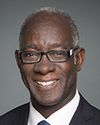Thank you, Chair,
Thank you members of the committee for inviting March of Dimes Canada to take part in this consultation process.
Allow me to introduce myself. I worked as a manager at Canadian Veterans Vocational Rehabilitation Services from 2011 to 2022. My organization provided vocational rehabilitation services for the duration of the contract awarded to the Canadian Veterans Vocational Rehabilitation Services (CVVRS) and the VAC Rehabilitation and Vocational Assistance Program from 2009 to 2022.
Over the past 12 years, March of Dimes Canada has worked diligently to support more than 12,000 veterans and their family as they transition from military life to civilian life. Currently, as I am sure you are aware, the services provided by the rehabilitation program are delivered by a new consortium that we do not belong to. We therefore no longer provide these services on behalf of the government.
I would remind committee members that our role was to serve veterans who have left the Canadian Forces for medical reasons. Our mandates were to assess veterans' functional capacity, provide recommendations for a possible vocational rehabilitation path or a possible diminished earning capacity status and, when appropriate to do so, support veterans throughout the entire process as they reintegrate into the workforce, which can take several years in some cases.
Having been a manager throughout my entire time with these two consortiums to provide services under the federal program, I have specific expertise in some areas, but I am not an expert in every aspect or issue affecting the professional reintegration of Canadian veterans.
When I was writing this speech, I reflected on what our contribution to this consultation process might be. Now that we no longer deliver official services under the program, we believe we are not in the best position to make recommendations for existing and future services. Unfortunately, we are not familiar with the details of the new measures that have been brought in.
That being said, we believe that we can raise the committee's awareness of issues that we consider to be essential and that directly affect the quality of services provided to Canadian veterans and their families.
My first point is on the importance of taking a holistic approach to rehabilitation services. It is important to combine medical and vocational rehabilitation efforts concurrently. We know that the shorter an individual's period of professional inactivity, the better his or her chances at successfully reintegrating into the workforce.
Originally, both under the VAC Rehabilitation and Vocational Assistance Program and CVVRS, medical rehabilitation was managed by departmental case managers before the client was sent to the vocational rehabilitation program. In practice, it became apparent that the rehabilitation process was generally not a linear process. For example, a veteran taking a course with the aim of returning to the workforce may experience a setback that requires resuming treatment. At the same time, a veteran in treatment might benefit from being assigned to a project quickly as a means of motivation and a launchpad to pursuing his efforts in medical rehabilitation.
My second point is the importance of a common and consistent language by all parties taking part in this service delivery.
We believe it is essential to pay attention to the consistency and quality of communications with veterans at all times. Managing a national rehabilitation program involves the participation of several interdependent entities, for example case managers from Veterans Affairs, service providers such as doctors, psychologists, ergonomists and vocational rehabilitation experts, Veterans Affairs Canada as an institution and partner companies that are in charge of service delivery. There are many entities from various backgrounds that have to work together toward a common objective, the well being of veterans and their family. In order to maximize the quality of services provided to veterans, it is critical to ensure that all the players in this process understand service provision under the program as a whole as well as their respective roles within it.
It is also important for the program to be presented to the veterans and discussed with them in a common and consistent language. This may seem simple, but from an operational point of view, this is very complex. It is a challenge that every entity must meet on a daily basis.
My third and final point is the importance and presence of job developers, in other words ambassadors responsible for representing veterans in Canadian companies. This role was brought in midstream within the program run by CVVRS and it had an immediate impact on the placement rate of participating veterans. The role of these ambassadors was to support more directly veterans actively looking for work and especially to create a multitude of connections with Canadians with a view to creating strategic partnerships to encourage the hiring of this skilled labour.
The presence of these job developers, in our opinion, is critical to such a program and suitable within any type of vocational reintegration initiative for Canadian veterans.
I would be pleased to discuss it in further detail with you as you need, and to answer any questions.


